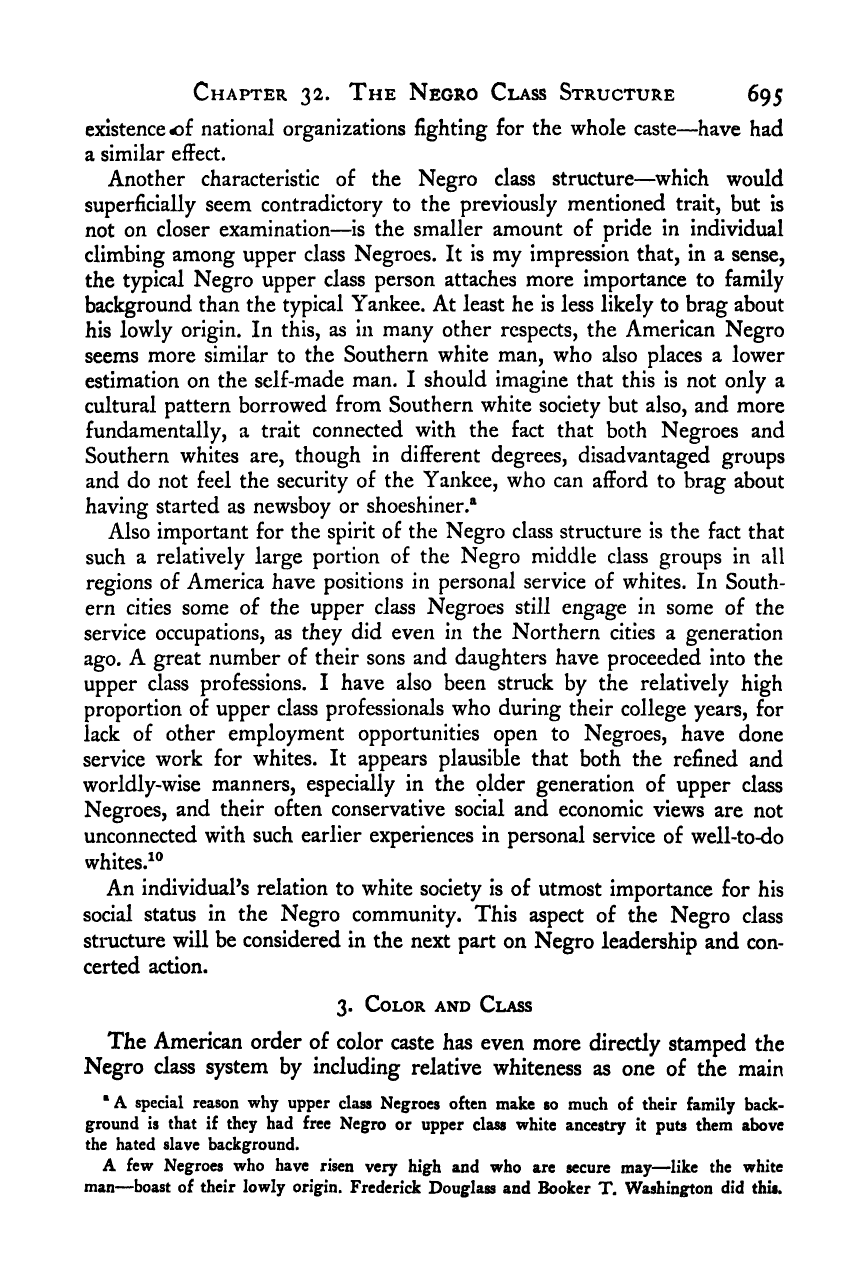Note: Gunnar Myrdal died in 1987, less than 70 years ago. Therefore, this work is protected by copyright, restricting your legal rights to reproduce it. However, you are welcome to view it on screen, as you do now. Read more about copyright.
Full resolution (TIFF) - On this page / på denna sida - VIII. Social Stratification - 32. The Negro Class Structure - 2. Caste Determines Class - 3. Color and Class

<< prev. page << föreg. sida << >> nästa sida >> next page >>
Below is the raw OCR text
from the above scanned image.
Do you see an error? Proofread the page now!
Här nedan syns maskintolkade texten från faksimilbilden ovan.
Ser du något fel? Korrekturläs sidan nu!
This page has never been proofread. / Denna sida har aldrig korrekturlästs.
Chapter 32. The Negro Class Structure 695
existence -of national organizations fighting for the whole caste—have had
a similar effect.
Another characteristic of the Negro class structure—^which would
superficially seem contradictory to the previously mentioned trait, but Is
not on closer examination—is the smaller amount of pride In Individual
climbing among upper class Negroes. It is my impression that, In a sense,
the typical Negro upper class person attaches more Importance to family
background than the typical Yankee. At least he is less likely to brag about
his lowly origin. In this, as in many other respects, the American Negro
seems more similar to the Southern white man, who also places a lower
estimation on the self-made man. I should imagine that this is not only a
cultural pattern borrowed from Southern white society but also, and more
fundamentally, a trait connected with the fact that both Negroes and
Southern whites are, though in different degrees, disadvantaged groups
and do not feel the security of the Yankee, who can afford to brag about
having started as newsboy or shoeshiner.*^
Also important for the spirit of the Negro class structure is the fact that
such a relatively large portion of the Negro middle class groups in all
regions of America have positions in personal service of whites. In South-
ern cities some of the upper class Negroes still engage in some of the
service occupations, as they did even in the Northern cities a generation
ago. A great number of their sons and daughters have proceeded into the
upper class professions. I have also been struck by the relatively high
proportion of upper class professionals who during their college years, for
lack of other employment opportunities open to Negroes, have done
service work for whites. It appears plausible that both the refined and
worldly-wise manners, especially in the plder generation of upper class
Negroes, and their often conservative social and economic views are not
unconnected with such earlier experiences in personal service of well-to-do
whites.^®
An individual’s relation to white society is of utmost importance for his
social status in the Negro community. This aspect of the Negro class
structure will be considered in the next part on Negro leadership and con-
certed action.
3. Color and Class
The American order of color caste has even more directly stamped the
Negro class system by including relative whiteness as one of the main
“A special reason why upper class Negroes often make so much of their family back-
ground is that if they had free Negro or upper class white ancestry it puts them above
the hated slave background.
A few Negroes who have risen very high and who are secure may—like the white
man—boast of their lowly origin. Frederick Douglass and Booker T. Washington did this.
<< prev. page << föreg. sida << >> nästa sida >> next page >>